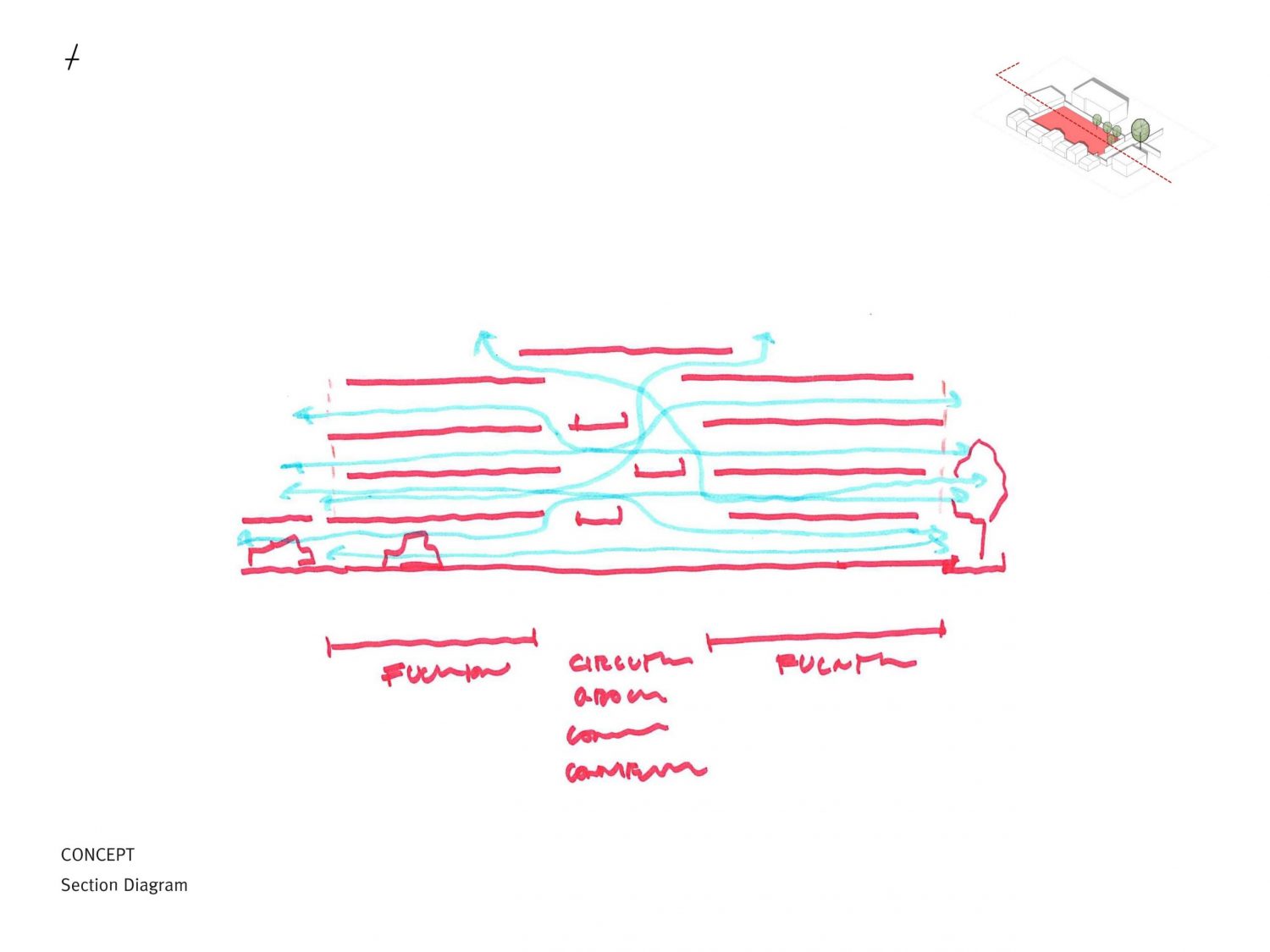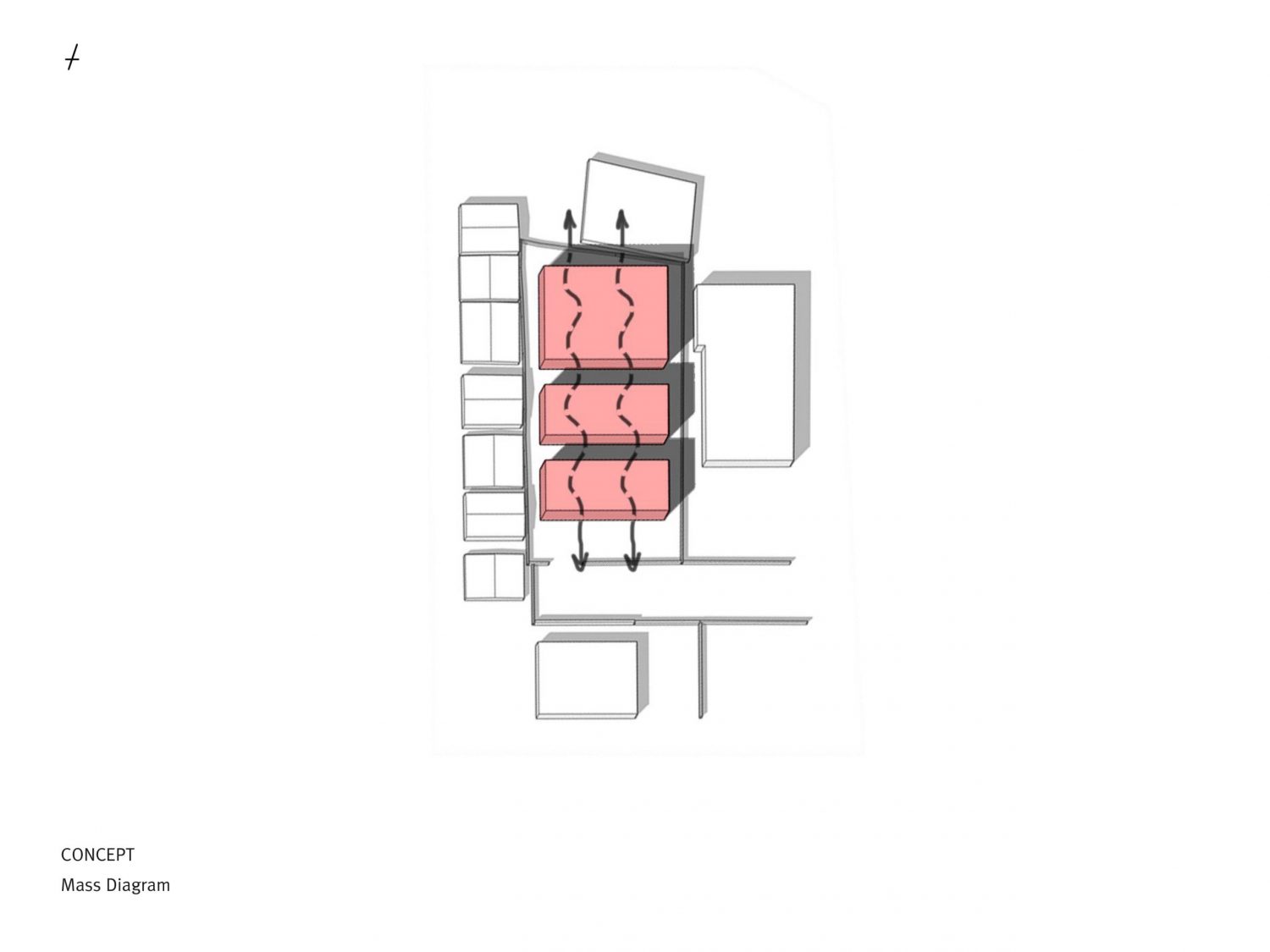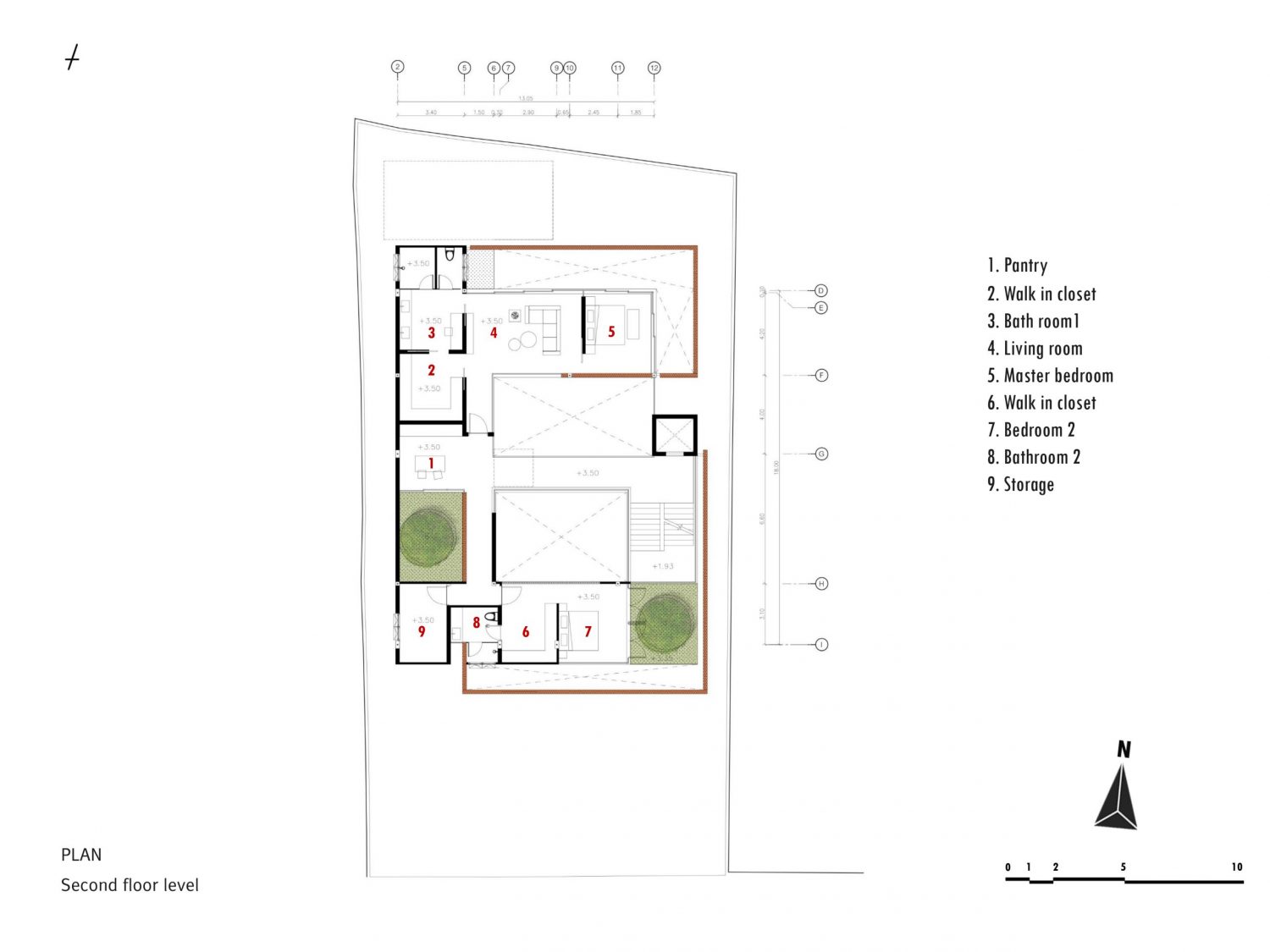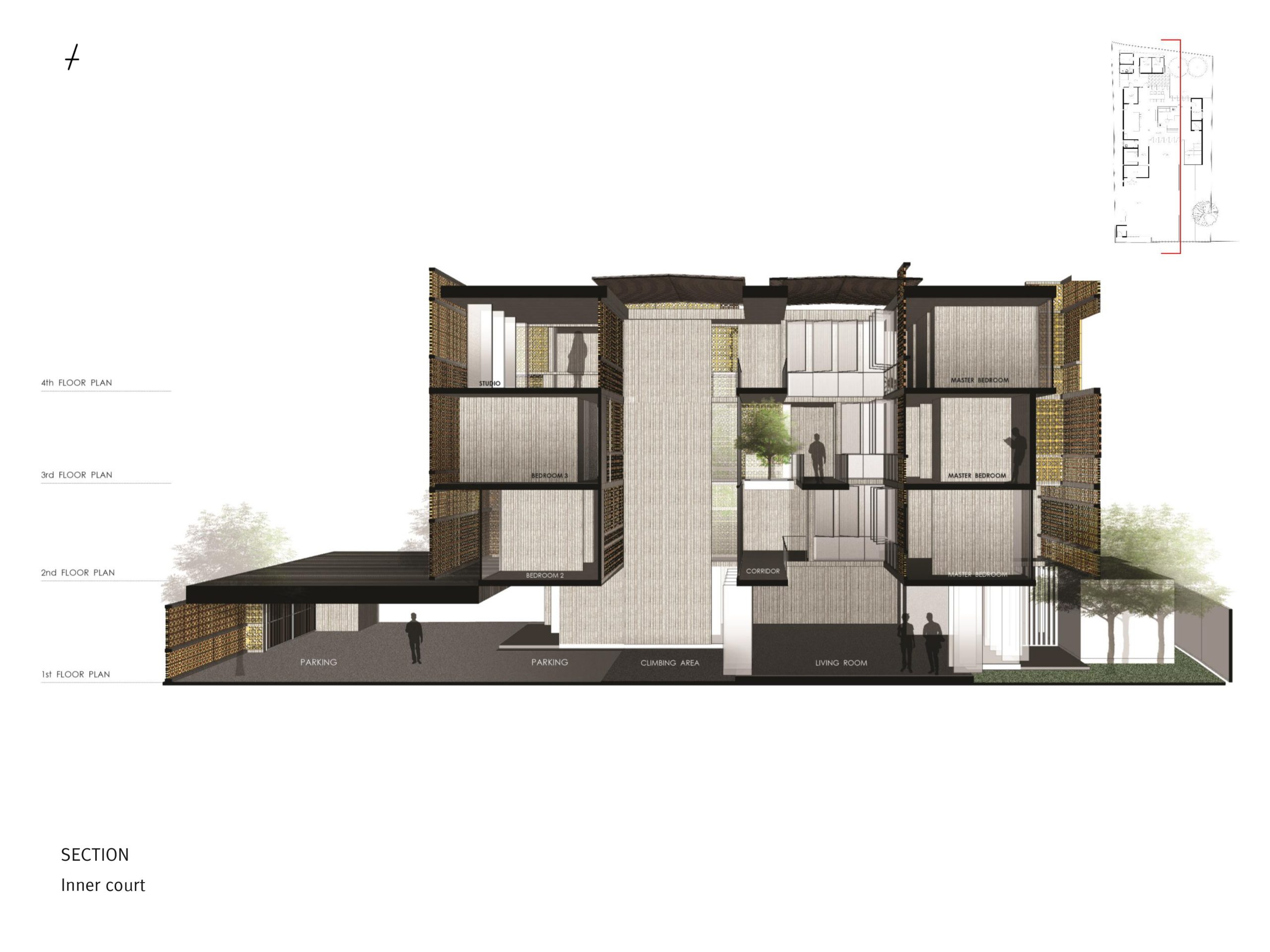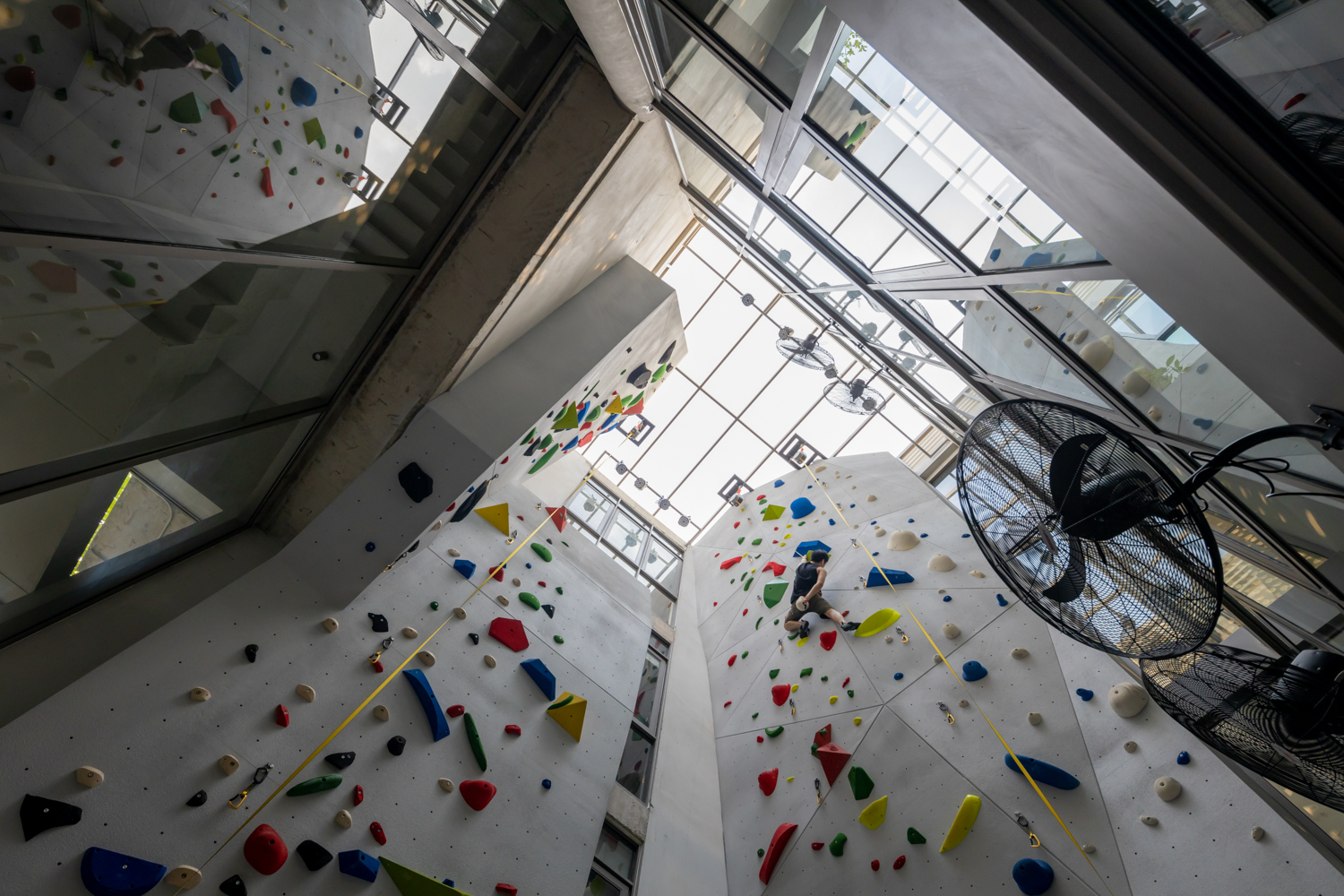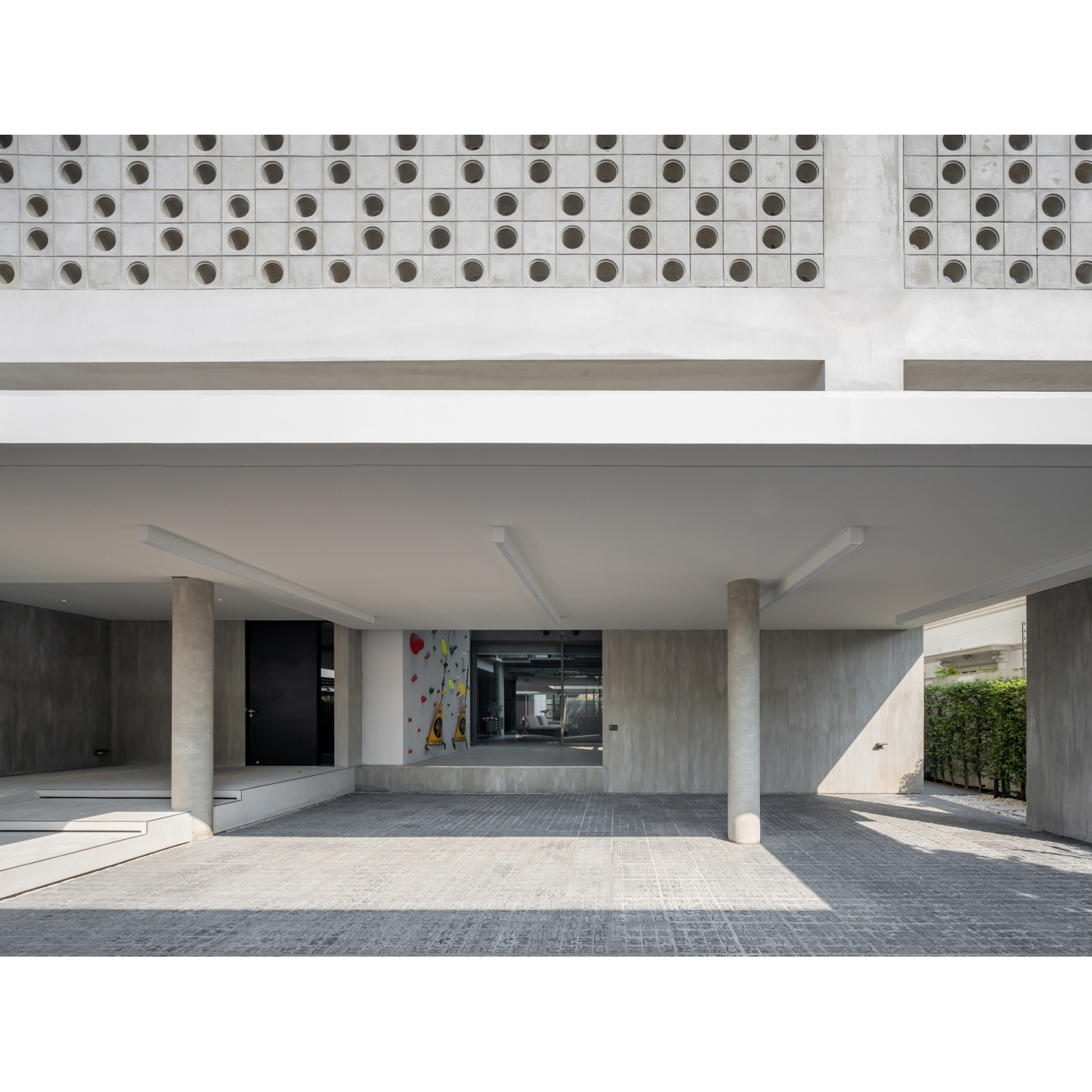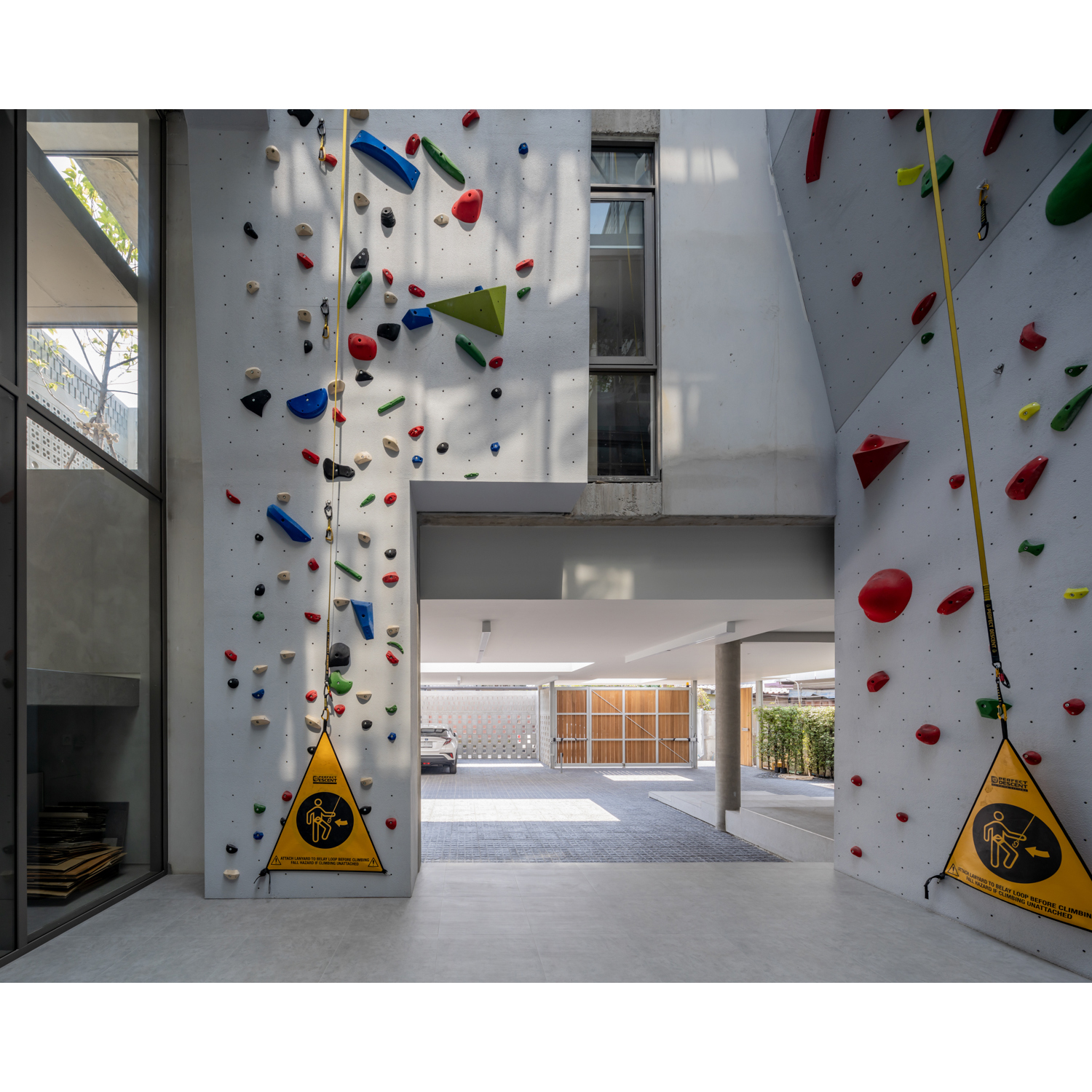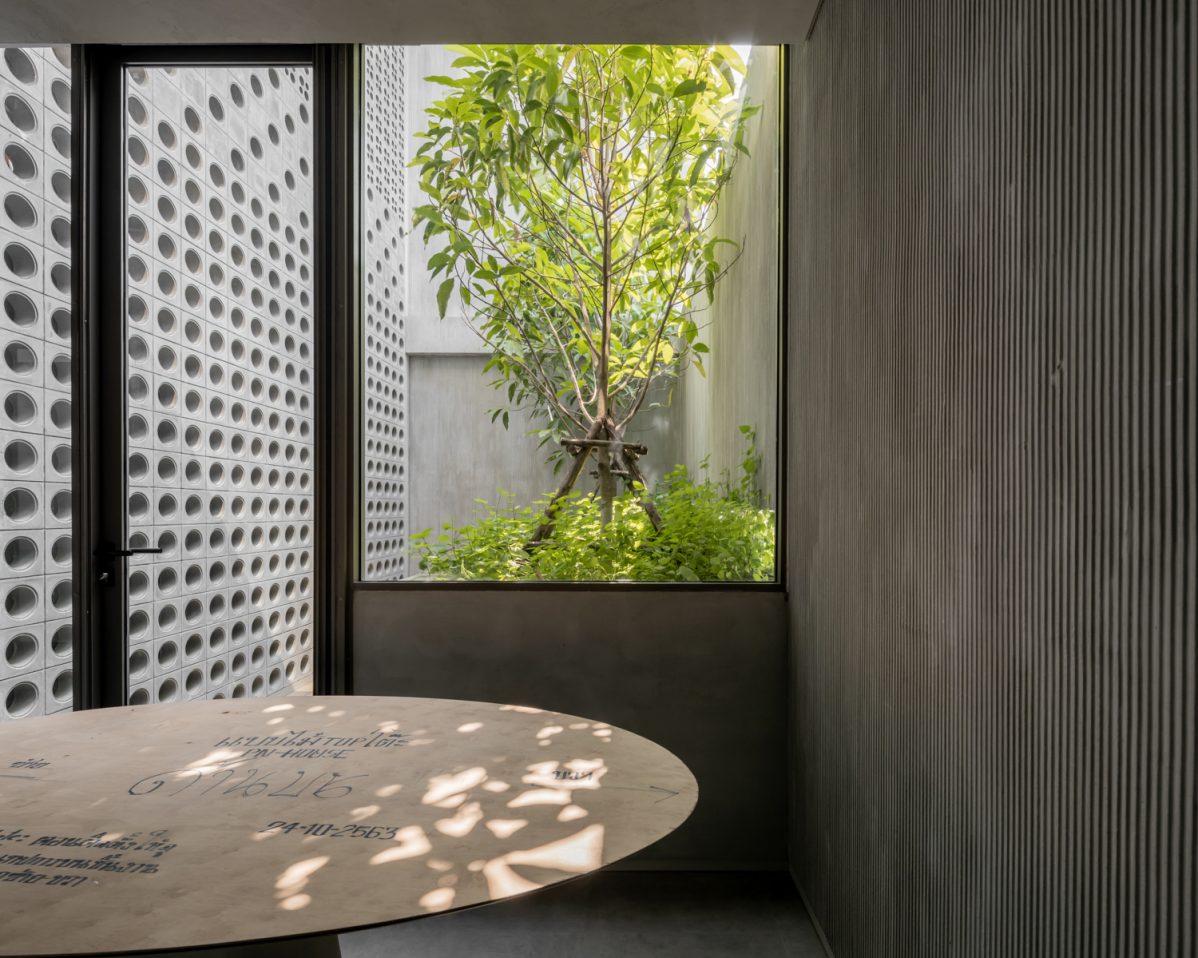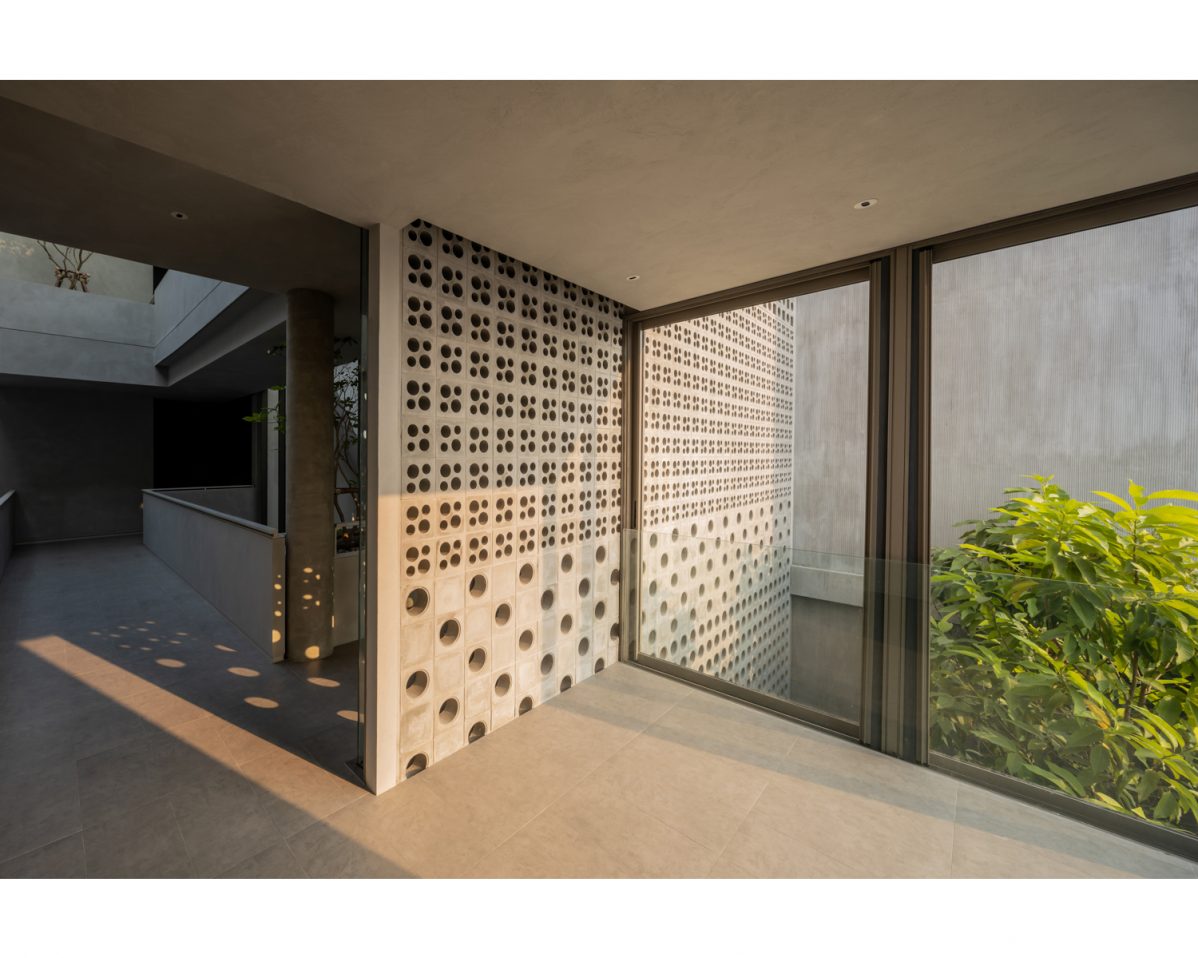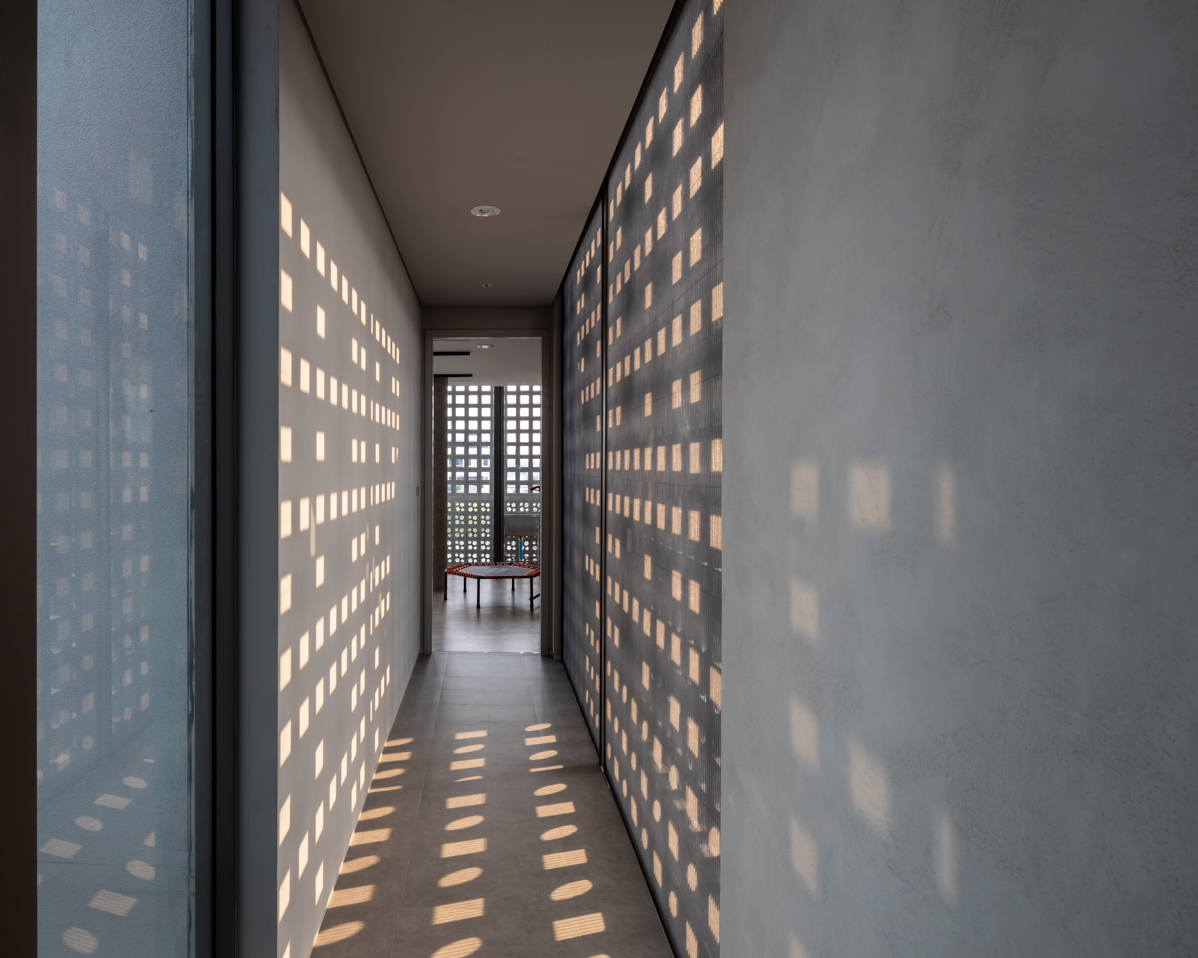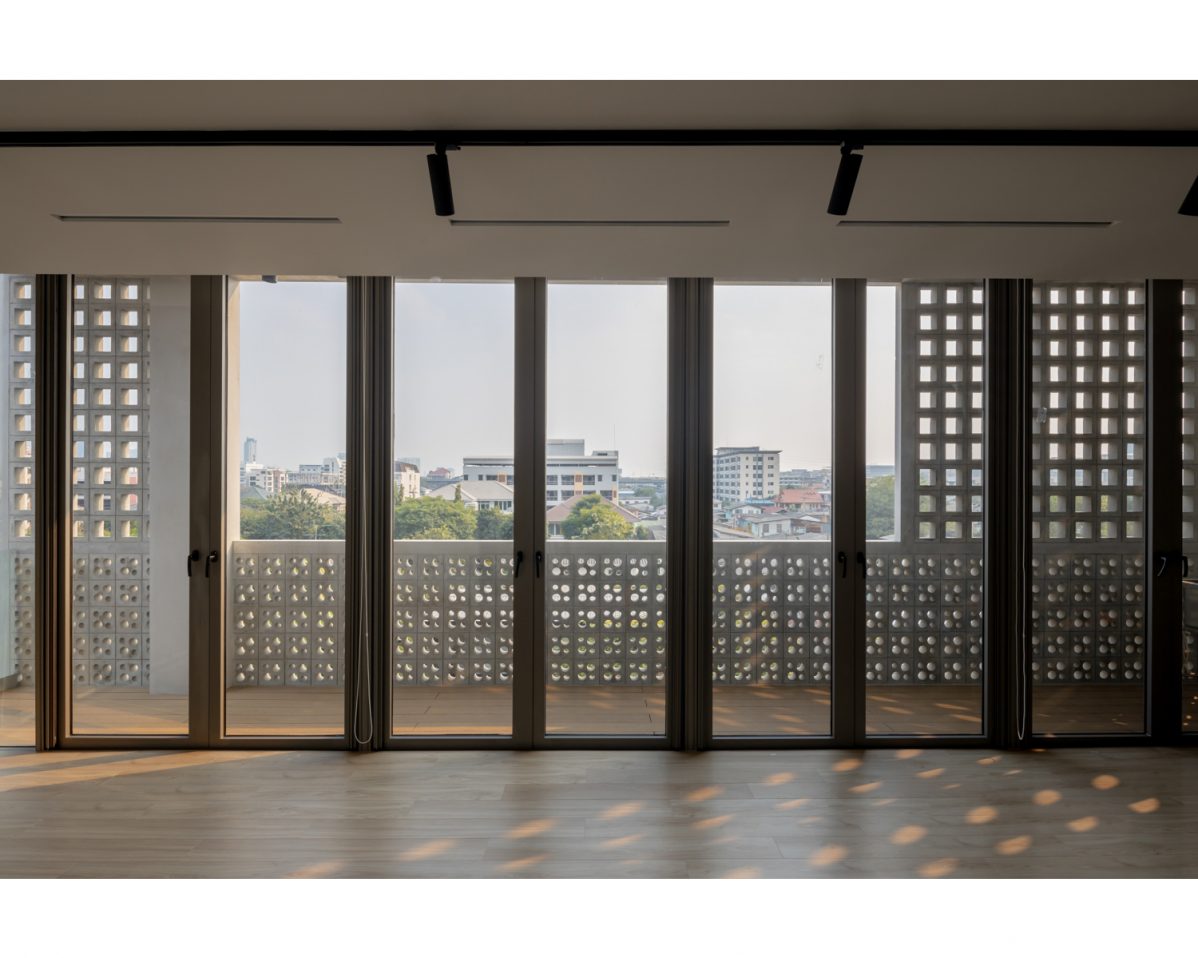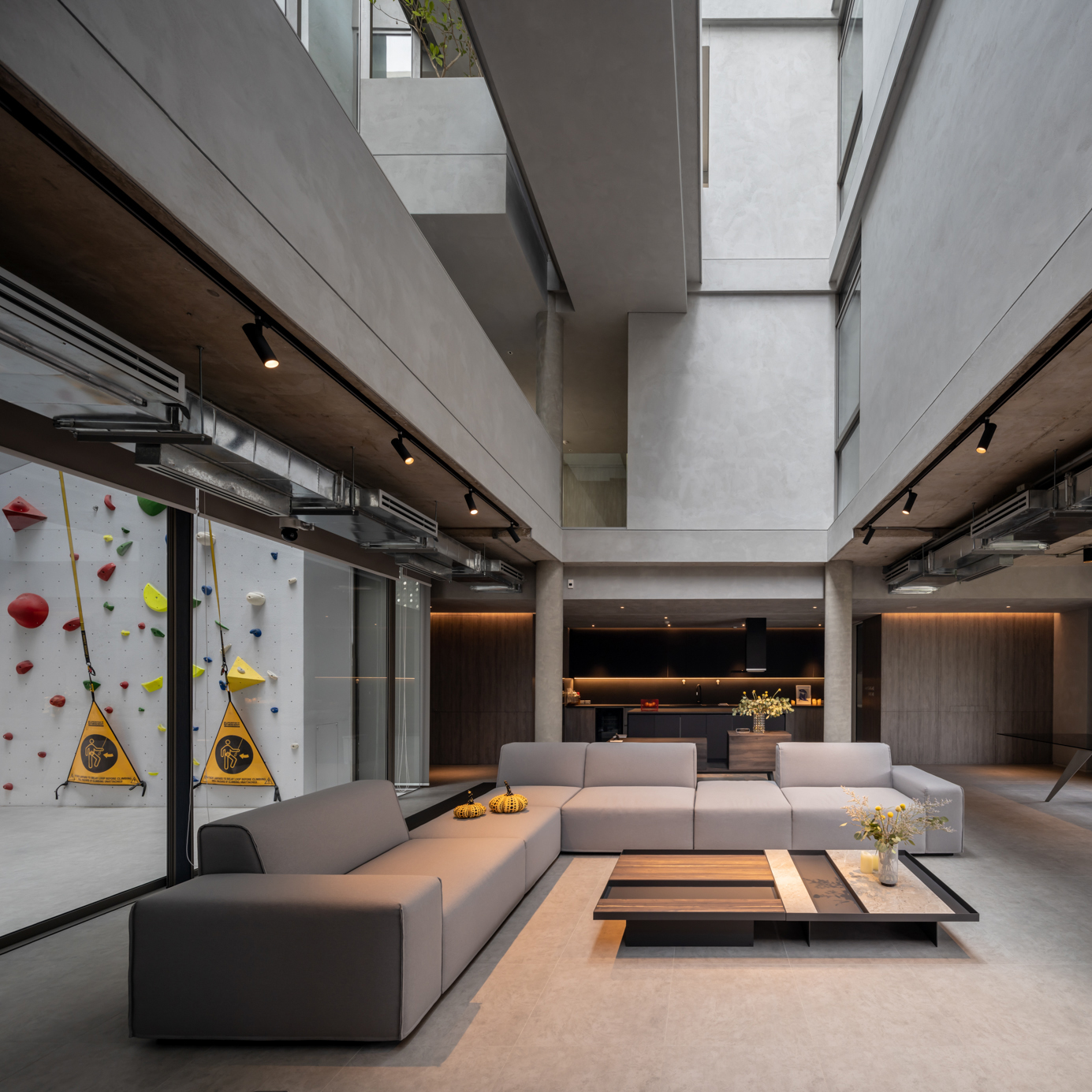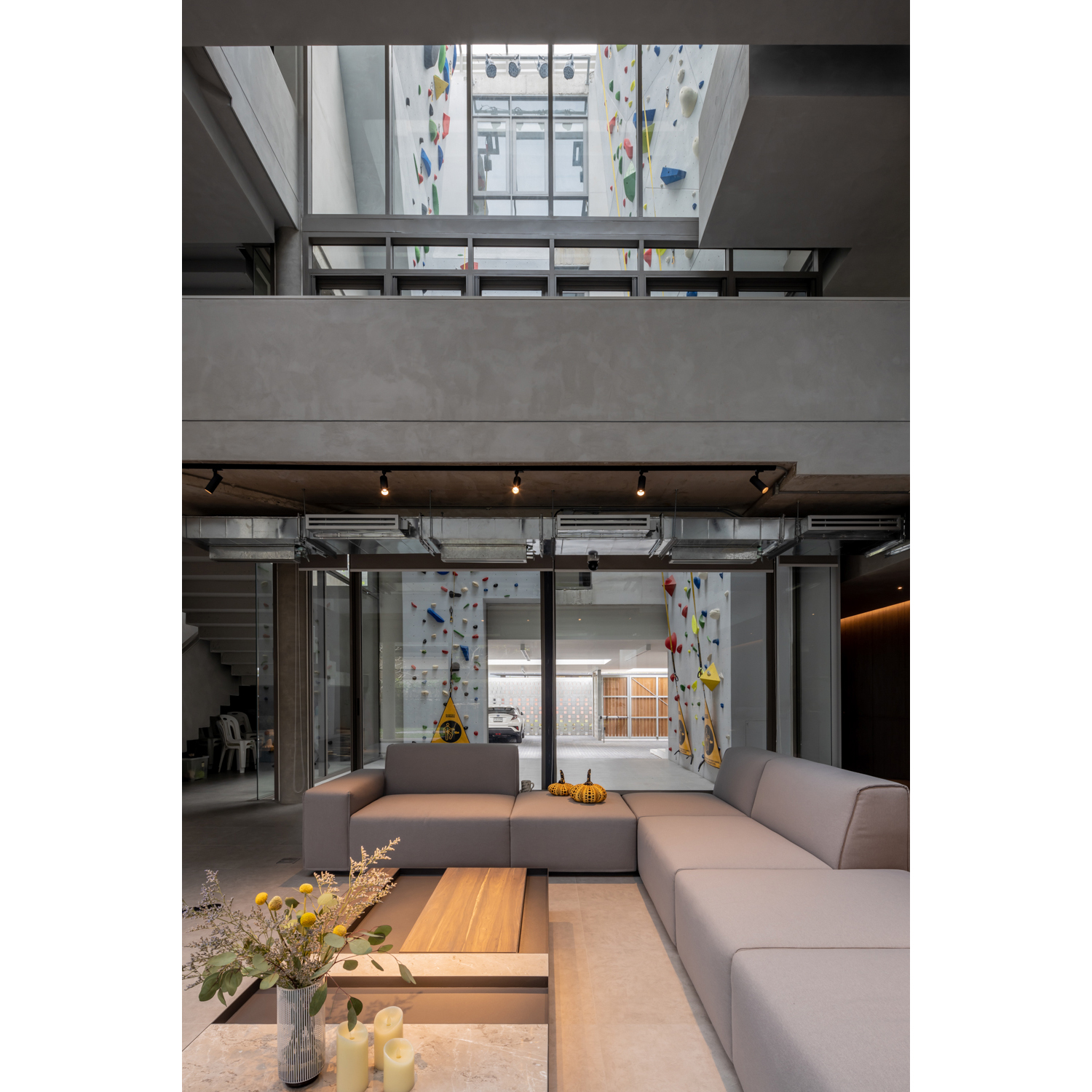IN THEIR LATEST PROJECT, ANONYM DRAWS THE CHEERFULNESS
OF THE WIND IN AND DRAWS THE RIGIDNESS OF THE DESIGN OUT
BY USING BREEZE
TEXT: PRATCHAYAPOL LERTWICHA
PHOTO: KETSIREE WONGWAN EXCEPT AS NOTED
(For Thai, press here)
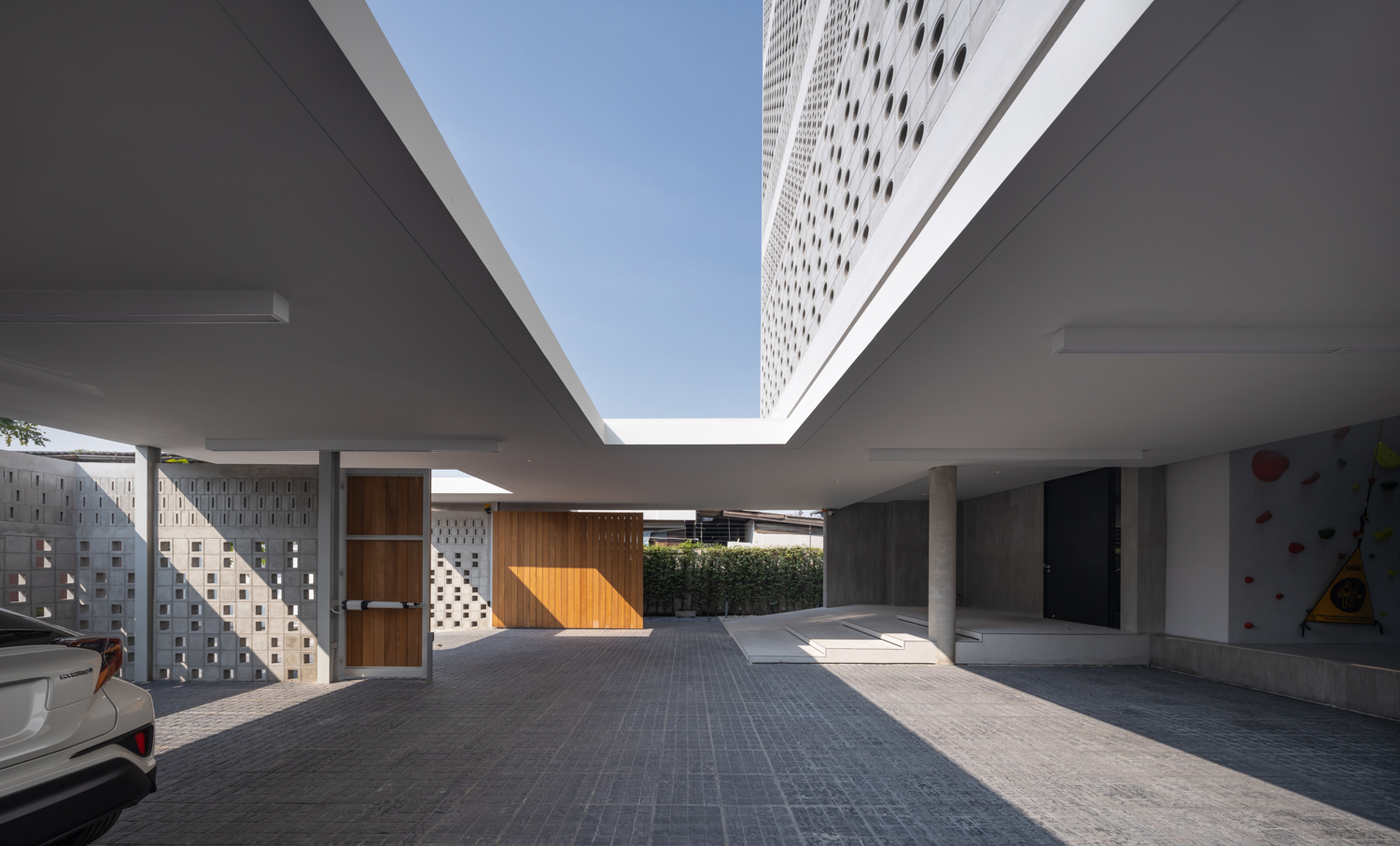
For Phongphat Ueasangkhomset, the co-founder of Anonym, each of the houses he has designed possesses its own idiosyncratic characters from the context, functionalities to the owner’s personalities. For the latest residential project, ‘wind’ was the element that the architect distinctly noticed when he did the first site inspection. Due to its palpable presence, wind becomes an essential ingredient of the design, integrated into various details of the house, just like the name ‘Baan Sailom’ or House of the wind.
Baan Sailom is a four-story home that accommodates members from three families. Anonym designs the inside to look and feel like a service apartment with functional spaces that each family member can use freely and separately on each floor. The first floor consists of common areas such as the living room and kitchen, while the upper floors house bedrooms, more living areas and small pantries. Every story is linked together via two internal courtyards that open up into the void running from the ground to the fourth floor.
The first court is an outdoor space with a climbing wall, a requirement from the owner who climbs as a hobby. The remaining court hosts a walkway for each floor, designed to overlap and bring interesting space variations. The roof is elevated at the upper part of the court, creating a void to facilitate airflow with a transparent material used to welcome natural light. While the courts exist as a part of the house’s interiors, the openings that lead the wind and light into the living space creates a pleasant obscurity, adding the outdoor element to the indoor area.

The highlight of the house’s exterior is the brick facade that offers natural ventilation with the material having been arranged in various dynamic patterns. The perforated bricks are used not only because of their ventilation properties but also for their safety, affordable price, including the freedom they offer the design and the privacy they can bring to dwellers.
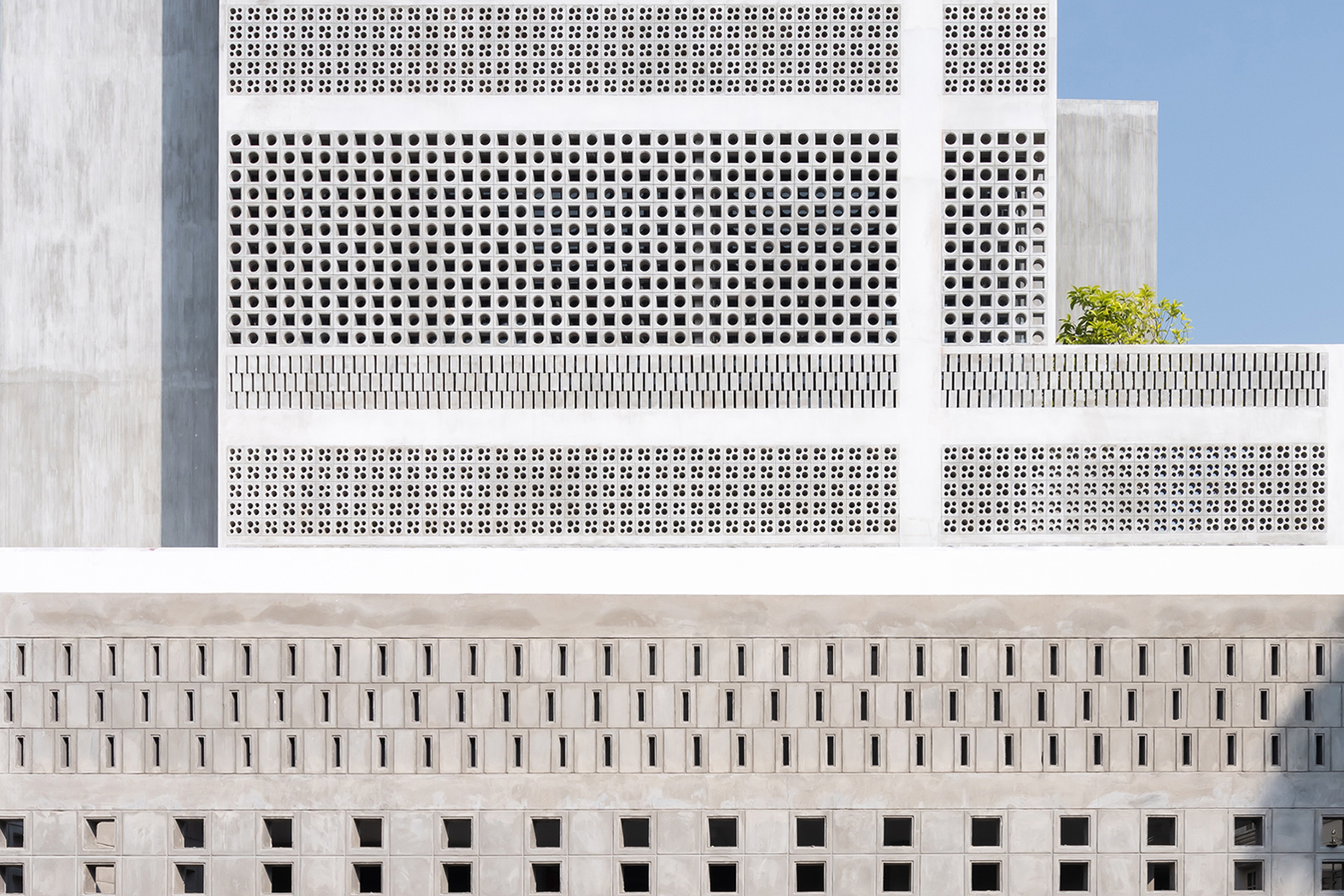

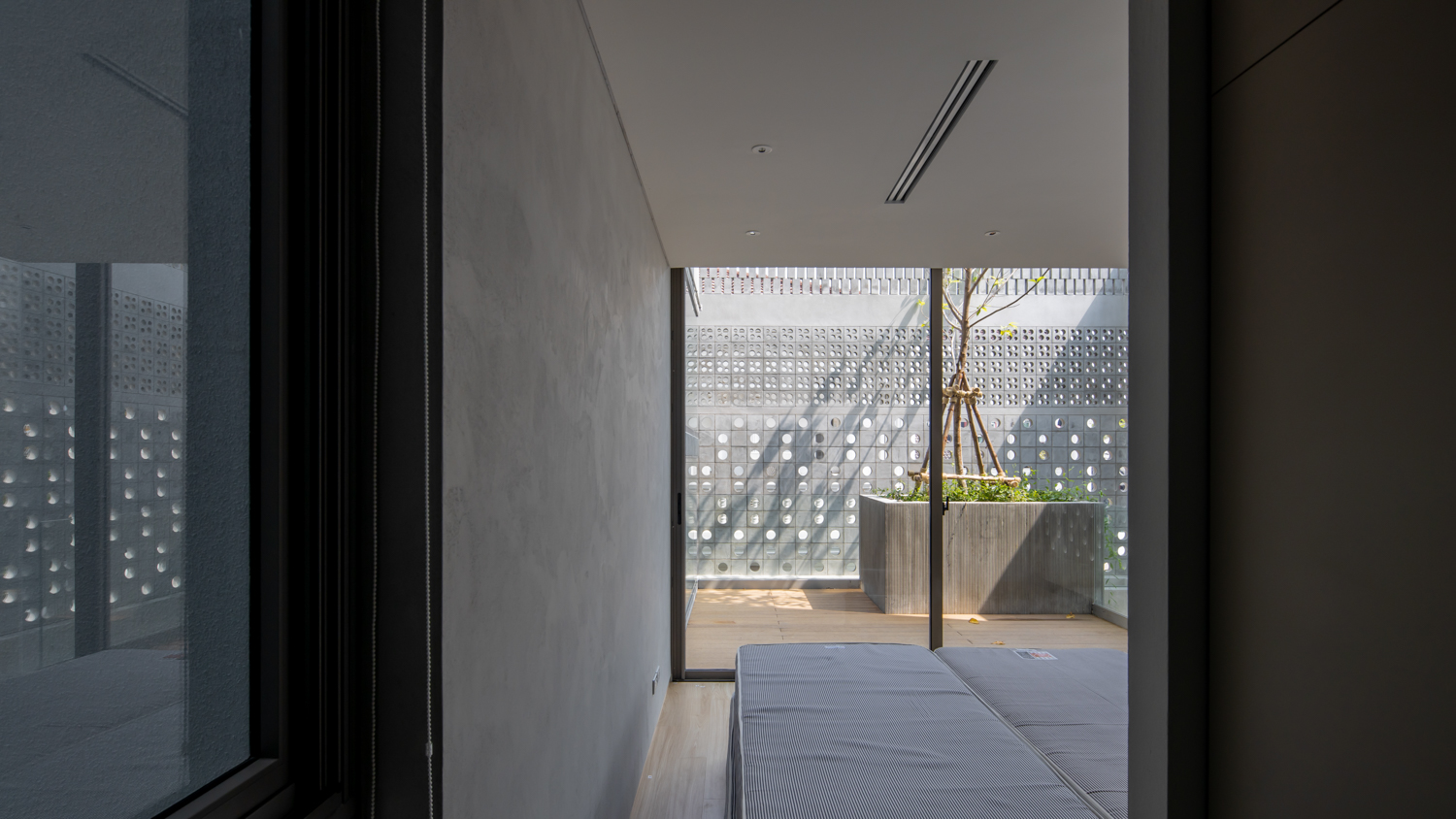
The facade is designed to cover the parts of the house exposed to an excessive amount of sunlight. The brick pattern is less perforated in the areas on the ground floor where more privacy is required. For the top part of the facade and higher floors, the patterns become more perforated and airier, corresponding to the surroundings that are more open and unobstructed. The space between the facade and the house is designed into a veranda with potted plants, adding a visually pleasant green area to the living space. The variations of perspective result in the house’s diversified floor plans and functional spaces as the facade diminishes the four-story structure’s rigidity.
There are other fun details about the facade. For example, the architect wanted to use the bricks without making any cuts. Therefore, calculating the ranges between each block, beams and lintels was critical. They achieved that, not merely from the finalized working drawing on paper, but additional adjustments and experiments made on the site, which helped to attain the desired outcome. “There is this element of craft to it as well,” said Phongphat.

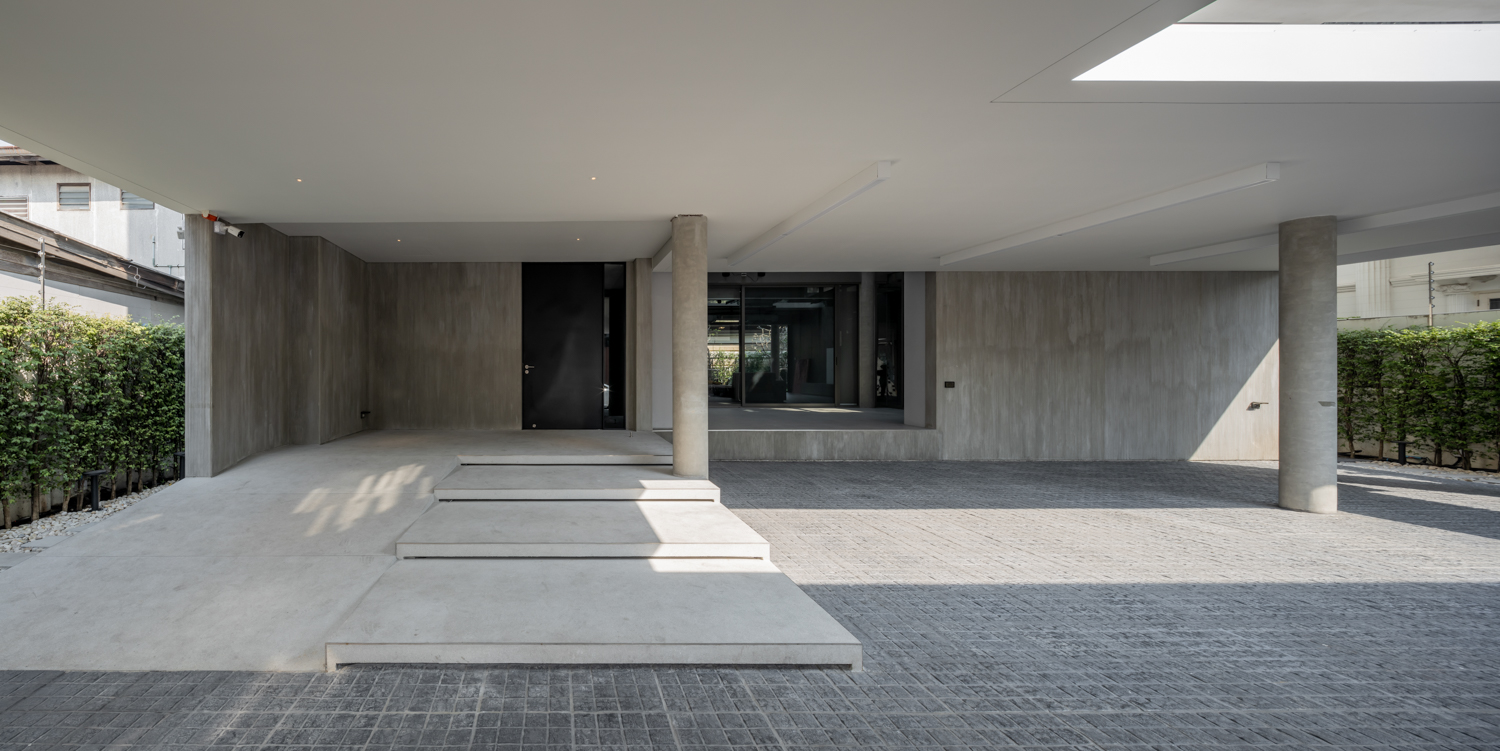
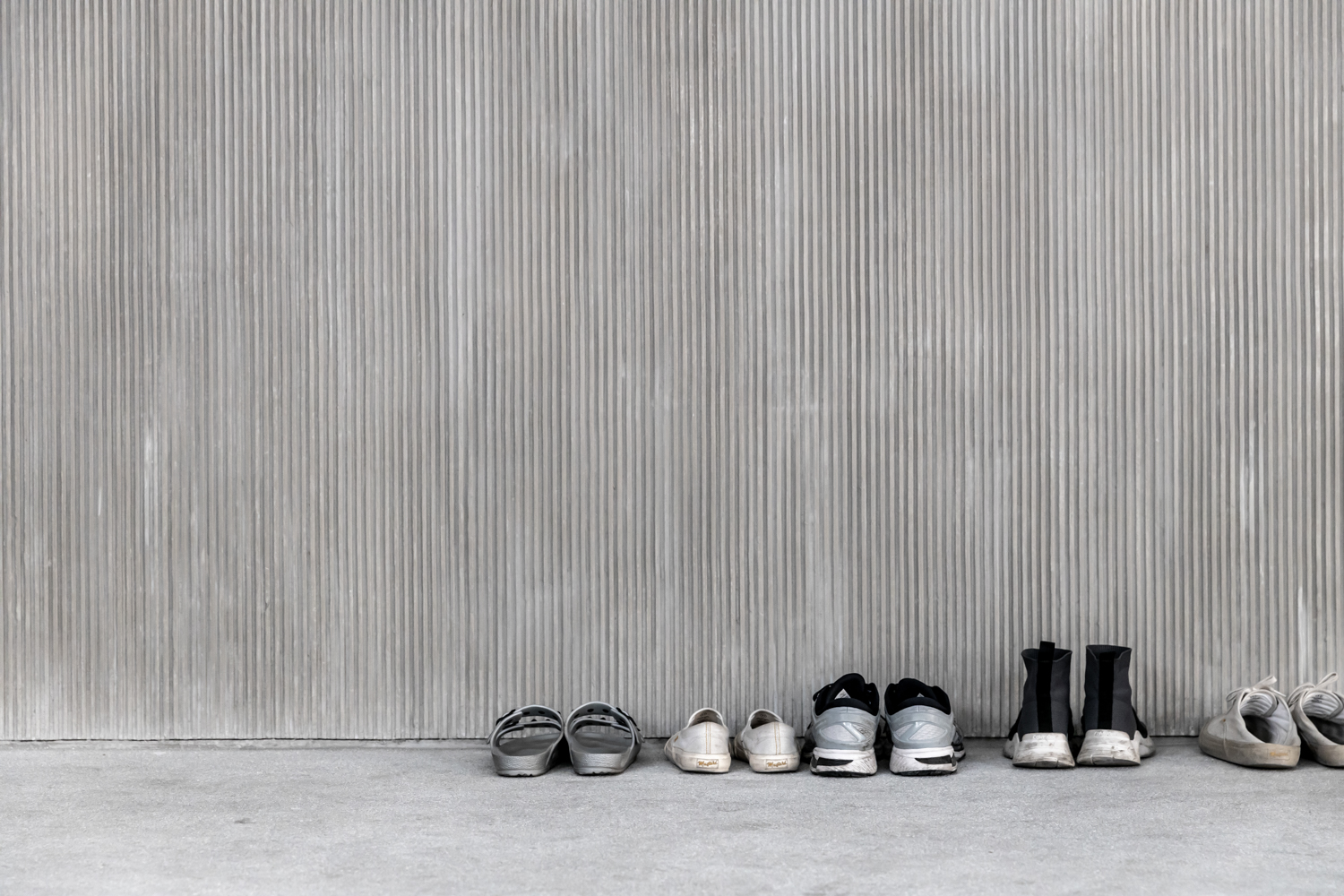
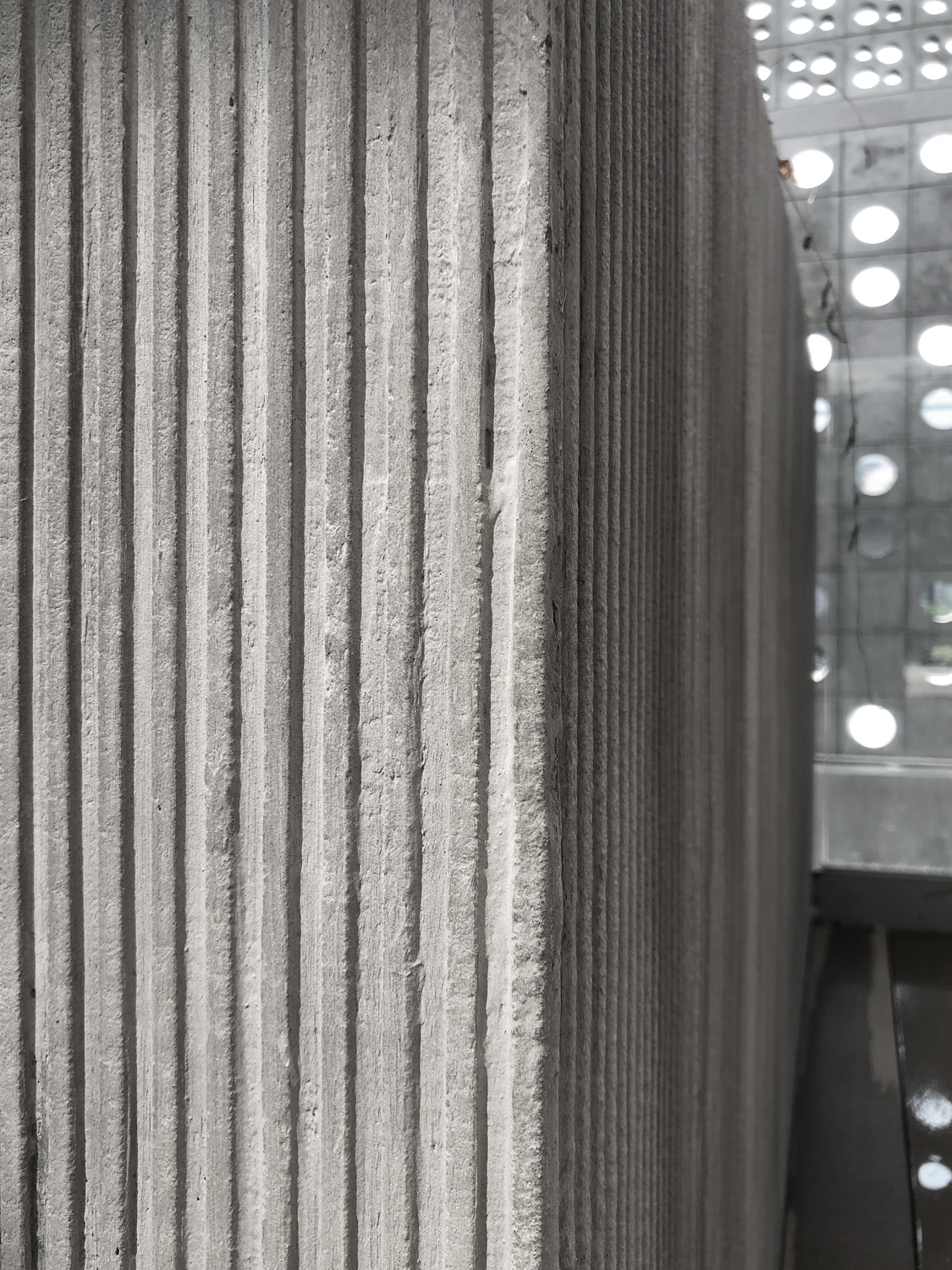
Photo: Napat Charitbutra
Desolidifying the architectural structure is one of the design’s strong characteristics. It’s expressed in the forms of openings, internal courtyards, or the play with textures on different materials, be there the perforated bricks or the concrete surface whose customized patterns were crafted using a prefabricated trowel. The architect mentioned that he didn’t know how to create that particular texture at first until the experimentation took place on-site with the builders’ help, creating a pattern that brings interesting dimension and lessens the rigidity of the concrete walls’ plain.
Like the house’s architecture, the architect’s approach and execution are somewhat more relaxed. Anonym is known for their immaculate details. But with Baan Sailom, Phongphat deliberately left the beam above the brick facade exposed. The air conditioning pipes are also left uncovered in the living room. Such a shift in the design has got many people thinking that perhaps this is the work of a different architect. “I like this house because it isn’t about the crisp and polished details. We did everything the way it could and should be done. I wasn’t too serious or trying too hard about making everything flawless, and that’s what I love most about it,” added Phongphat.
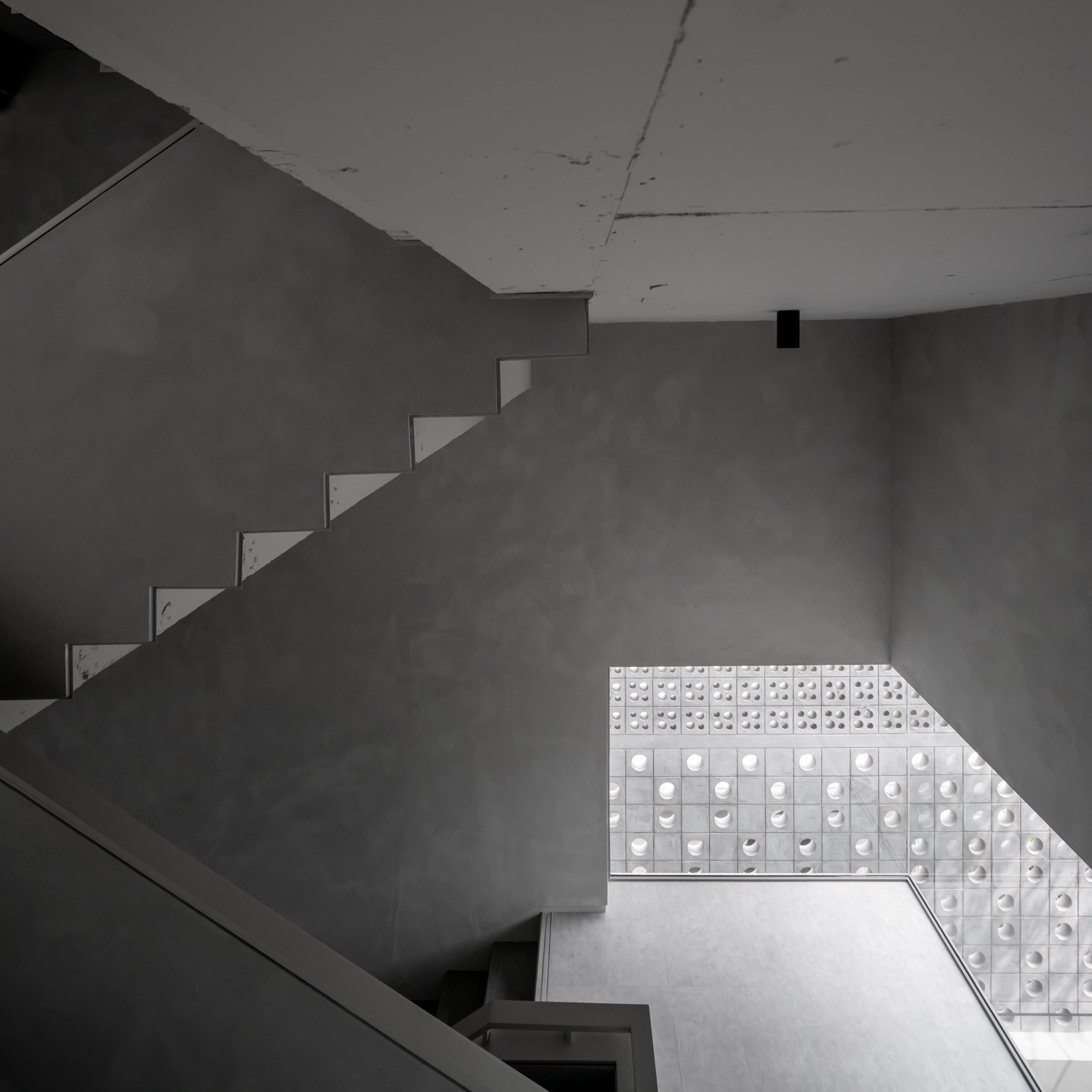
With Baan Sailom, the wind does not only bring comfort to the home but adds a new dimension to the architect’s identity. It’s exciting to see the next steps Anonym are taking and the possible changes we will get to witness from the studio’s evolving design language.



